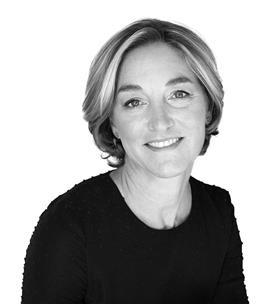To solve today’s complex problems we need to engage the brainpower, passion and talent of a truly diverse workforce – so what’s yours looking like?
How would you describe your 2019? The end of the year invites us to look back and take stock, and for me what emerges is a year of contrasts. On the one hand, I am left with a feeling of sameness, of yet another year defined by the uncertainty of Brexit and what it might mean to our profession. But on the other, 2019 seemed to bring with it a distinct shift.

In its early months, Greta Thunberg – a teenage student with no commercial or corporate agenda – made us all sit up to the reality of climate change. In the weeks that followed, the world began to echo this same sense of urgency, inciting a global call to action. It became apparent that things were not business as usual, and that we could no longer ignore the “inconvenient truth”. The architectural and construction profession eventually also stepped up to the plate, with a group of 17 RIBA Stirling prize-winning architecture practices – of which my studio, dRMM, formed part – publicly declaring a climate emergency and outlining steps we all must take to address it. In this sense, 2019 appears largely to have been about not just partaking but advocating for a widespread reordering of priorities.
We can’t solve those problems if all the problem solvers look the same, think the same and come from the same background
But what does that look like in practice? And how can we ensure that we pragmatically affect the change we acknowledge is needed? For me, the answer must first lie in looking more closely at our own workplaces – how they work, how they look, who they are made up of. Equality lies at the heart of the current sustainability focus because what we are faced with are complex problems, and we can’t solve those problems if all the problem solvers look the same, think the same and come from the same background.
For us to be able to build practices that prioritise environmental sustainability within the wider profession, we need to first examine our own micro-power structures. We need to pay better attention to representation and balance within our teams and perform our own “priorities audit”. Studies specific to our industry have shown how a diverse workforce makes us more profitable, but we now need to focus on cultural, social and environmental profitability and how architectural practices can lay the groundwork for achieving it. As business owners, managers and creative leaders, we need to empower less prominent voices within our teams, and that means creating a level playing field at work.
People from BAME backgrounds need to be given a louder voice within the sustainability discussion
Unesco credits women with having led many of the world’s most innovative responses to environmental challenges, and it has also been evidenced that climate change affects men and women differently. It is therefore not only obvious but critical that we adopt a gender-balanced approach to decision-making. To do that we must reinforce our practices with greater balance – creating better options for flexible work, more open and transparent promotion pathways and a renewed focus on closing the gender pay gap.
But work does not stop there. Our profession still has a long way to go in terms of achieving diversity through the empowerment of all minority groups – on this score, we all have to work harder. People from BAME backgrounds need to be given a louder voice within the sustainability discussion, and that means removing barriers that prevent them from pursuing professional opportunities. Across the board, people coming from all backgrounds, with varied identities, need to be more meaningfully integrated into industry practice. If not, we risk homogeny in our profession’s response to the climate crisis – which will not work. This challenge demands a nuanced understanding and nuanced action.
Looking forward to 2020, we need to be able to act collaboratively to approach problems that will undoubtedly prevail – whether it is climate change, Brexit or anything else. That will mean relying more meaningfully on the power of people to bring about transformative change. It is therefore encouraging that the main theme for the 2020 programme at MIPIM is titled “The Future is Human”, and that the event’s goal is to “reflect the full range of society […] to implement sustainable goals and to move towards an inclusive future”. Let us hope that more of our industry’s mainstream events, bodies and decision-makers move forward in the acknowledgment that creating a better world means better representation in practice. It means enlisting the brainpower, passion and talent of a truly diverse and balanced workforce.
Sadie Morgan is a co-founding director of dRMM architects. She is also the HS2 independent design panel chair, sits on the UK’s National Infrastructure Commission and is a mayor’s design advocate for the Greater London Authority



























No comments yet